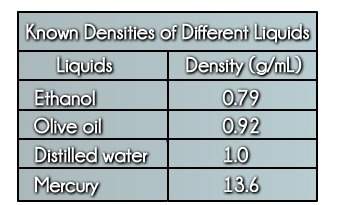
Physics, 05.07.2019 19:30 RiddleMeThis
An infinite plane of charge occupies the x − y plane with surface charge density σ = −1.8 × 10−6c/m2 . an infinite line charge with charge density λ = 2.2 × 10−6c/m runs parallel to the y axis through the point (20.0cm)ˆz. a negative point charge, q = −8.3×10−7c, is located at the point (10.0cm)ˆz. consider the electric field at a point p at (20.0cm, 0.00, 20.0cm). you must show the symbolic formula you use before substitution and place appropriate english description in the solution to this problem. do not even consider reporting an electric field that is not a vector or a number without appropriate units.
(a)draw the electric field vectors of the three objects at point p and label them e~ plane, p , e~ line, p , and e~ point, p for the electric field of the plane, line, and point charge respectively. get the directions correct, you have no way to figure out relative magnitudes.
(b)compute the electric field of the plane at point p, e~ plane, p .
(c)compute the electric field of the line charge at point p, e~ line, p .
(d)compute the electric field of the point charge at point p, e~ point, p .
(e)compute the total electric field at point p, e~ p .

Answers: 1
Another question on Physics

Physics, 22.06.2019 04:20
Calculate the capacitance of a system that stores 2.0 x 10^-10c of charge at 100.0 v. use c=q/v. a. 2.0 x 10^-12 f b. 2.0 x 10^-8 f c. 5.0 x 10^11 f d. 5.0 x 10^7 f
Answers: 1

Physics, 22.06.2019 11:00
Although longitudinal waves can travel through all media types what is the disadvantage of this type of wave transmission? a) he efficiency of he wave transmission is greatly diminished as the media becomes less dense b) the oscillation of one set of particles has a huge impact on neighboring particles c) particles become too close together as they bump into each other making it more likely to hit other particles down the line
Answers: 2

Physics, 22.06.2019 15:30
To understand the behavior of the electric field at the surface of a conductor, and its relationship to surface charge on the conductor. a conductor is placed in an external electrostatic field. the external field is uniform before the conductor is placed within it. the conductor is completely isolated from any source of current or charge. part a: which of the following describes the electric field inside this conductor? it is in the same direction as the original external field.it is in the opposite direction from that of the original external field.it has a direction determined entirely by the charge on its surface.it is always zero. part b: the charge density inside the conductor is: 0non-zero; but uniformnon-zero; non-uniforminfinite part c: assume that at some point just outside the surface of the conductor, the electric field has magnitude e and is directed toward the surface of the conductor. what is the charge density η on the surface of the conductor at that point? express your answer in terms of e and ϵ0
Answers: 1

Physics, 22.06.2019 21:30
The three classes of rocks are sedimentary, metamorphic, and igneous. how are rocks classified into one of these three groups?
Answers: 1
You know the right answer?
An infinite plane of charge occupies the x − y plane with surface charge density σ = −1.8 × 10−6c/m2...
Questions

Social Studies, 19.08.2020 04:01

Social Studies, 19.08.2020 04:01

Mathematics, 19.08.2020 04:01

Mathematics, 19.08.2020 04:01

Mathematics, 19.08.2020 04:01

Mathematics, 19.08.2020 04:01

Mathematics, 19.08.2020 04:01

Geography, 19.08.2020 04:01

Mathematics, 19.08.2020 04:01



Mathematics, 19.08.2020 04:01


Mathematics, 19.08.2020 04:01


Mathematics, 19.08.2020 04:01

Mathematics, 19.08.2020 04:01

Mathematics, 19.08.2020 04:01

History, 19.08.2020 04:01





